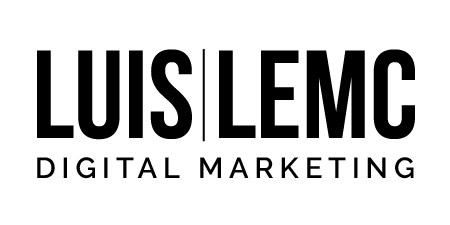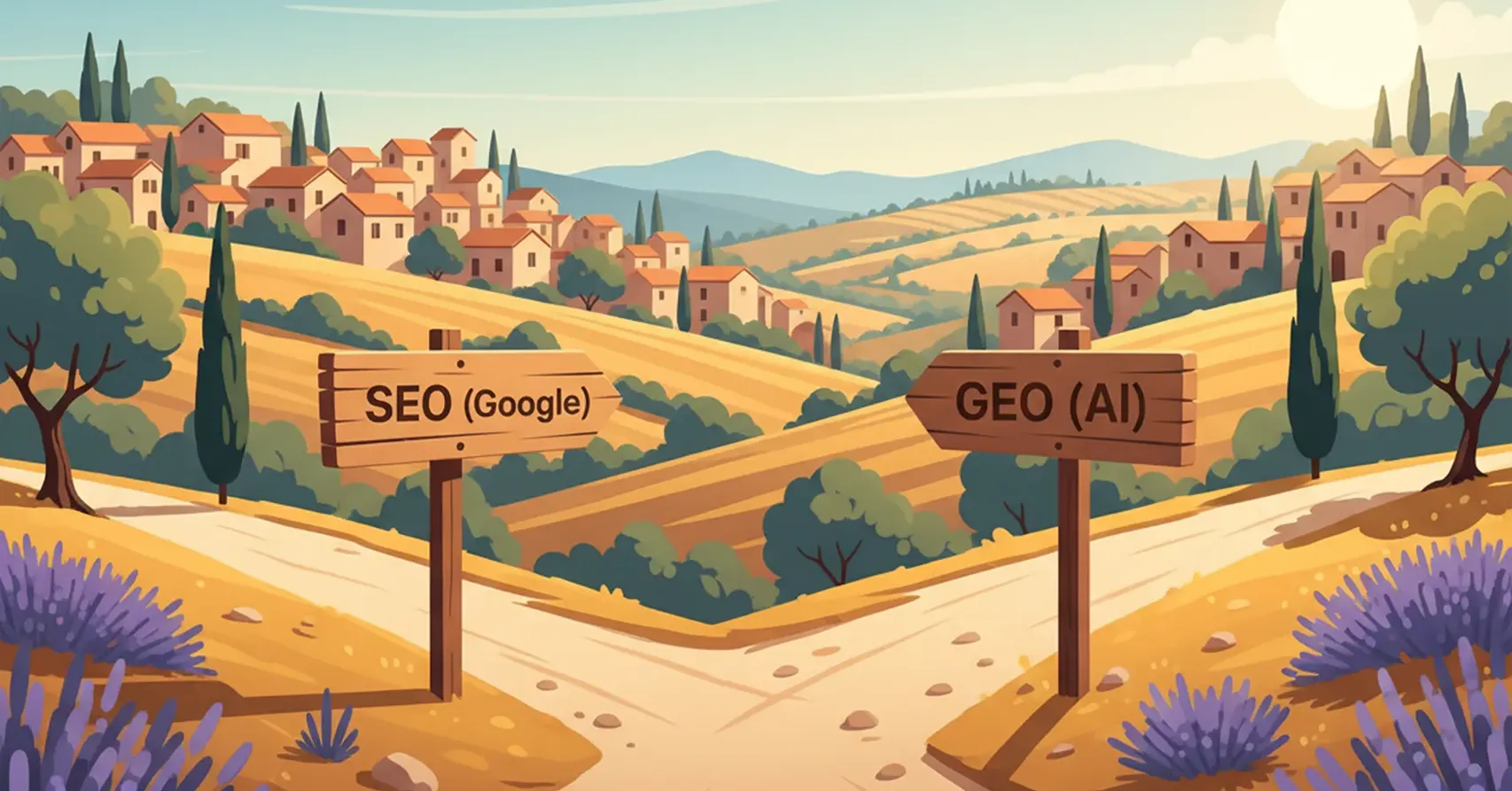
Your business doesn’t show up in AI: how to optimize your website for ChatGPT, Gemini and Perplexity
Complete guide for business owners: why artificial intelligences don’t recommend your company and how to fix it
Introduction (read me over coffee ☕).
Have you searched for your business on ChatGPT and it does not appear?
Imagine this: you have a beautiful store in Granada or Malaga, with a neat store window and quality products. But… there is no sign, the door looks closed and, from the corner, nobody understands what you are selling. This is what happens to many websites when an AI (such as ChatGPT, Gemini or Perplexity) tries to recommend a business and finds no clear signs.
In 2025, more and more people are asking questions like: “Which aesthetic clinic do you recommend in Granada?”, “A real estate photographer in Andalusia with good value for money?”, “A rural hotel near Baza for a weekend?”. If your website does not speak the language of AI – clear, direct and verifiable – it is as if you do not exist when your customers ask.
This is where GEO (Generative Engine Optimization) comes in. Relax, no weird technicalities: think of GEO as teaching the AI to understand your business and trust it. I am Luis Lemc, a web designer with 10 years of experience in Spain, and for years I have been helping businesses convert visitors into followers and sales. In this guide I will explain with everyday examples why your company does not appear in AI, what GEO is, how it differs from traditional SEO, and how we can optimize your website so that AI will recommend you when your customers ask.
What you will learn today
-
Why your website is invisible to AI (with simple analogies).
-
What is GEO and why is it different from appearing in Google.
-
How AIs decide who to recommend (as if they were trusted friends).
-
A checklist to find out if you need optimization.
-
What is included in an AI friendly website (without going into code).
-
How I can help you apply GEO in a professional and practical way.
Objective: That you finish this guide with clarity, without overwhelm, and with a simple plan for your business to show up when your customers ask the AI.
Table of Contents
-
- Why is your business invisible to ChatGPT and other AIs?
- How your customers search now: from Google to artificial intelligences
- What is GEO and why does your business need it?
- Differences between SEO and GEO: appearing in Google is not the same as appearing in ChatGPT
- How AIs decide which businesses to recommend
- Signs that your website needs to be optimized for AI
- What is included in a website optimized for artificial intelligences?
- Why you need an expert GEO web designer
- How Luis Lemc can help you optimize your website for AI
- Next steps: start your GEO optimization today
- Frequently Asked Questions (FAQ)
Why is your business invisible to ChatGPT and other AIs?

Recognizable situation:
You ask ChatGPT: “Recommend me an honest aesthetic clinic in Granada”. It responds with 2-3 options… and yours doesn’t come up. Why?
Simple analogy:
Your website is like that store without a sign. The AI looks at your storefront (your website) and wonders: What exactly do you sell? Where are you? What are you an expert in? What problems do you solve? Are you recommended? If he doesn’t see it clearly and quickly, he doesn’t recommend you.
Why it matters for your business:
Your customers already ask AI directly. If you don’t show up there, you miss out on real opportunities: bookings, calls, quotes.
⚠️ Warning signs
-
Your website does not clearly say what you do, where and for whom.
-
There are no specific questions and answers (FAQ) that the AI can quote.
-
Key information hidden in images or PDFs without context.
-
There are no verifiable testimonies or real cases.
Behind this “simplicity” there is method. Setting up your website for AI requires judgment and structure. That’s where an experienced web designer makes the difference.
Do you want to know if your website is optimized for AI? Write me and I will do a free review.
How your customers search now: from Google to artificial intelligences

Real Question:
“Are people still searching Google… or is it all AI now?”
Analogy:
Before, you would search for “best restaurant in Almeria” and check pages.
Now, you ask the AI directly, like a friend who knows your tastes: “I want a quiet, vegetarian and not too expensive restaurant near… what do you recommend?”
What changes:
-
Your client describes their situation (budget, location, style).
-
AI filters, summarizes and suggests.
-
If your website doesn’t feed that summary with clear answers, you’re out.
Important fact:
AIs do not show “pages 1, 2, 3”. They show few options. To be or not to be makes a difference.
To enter these suggestions, your website must be readable for IA and transmit confidence. This is designed.
What is GEO and why does your business need it?
Explanation of cafeteria:
GEO (Generative Engine Optimization) is teaching AI to understand and trust your business. It’s not magic or technicalities: it’s clarity, structure and credibility.
Simply put, GEO:
-
Clarify what you do and for whom.
-
Structure the information so that the AI can cite it.
-
Demonstrate confidence with real signs (testimonials, cases, consistent presence).
-
Answers frequently asked questions directly.
-
Keeps your key data consistent across the web.
Why you need it:
-
Your customers are already asking AI.
-
Appearing in these responses brings you new customers.
-
GEO gives you an advantage over competitors who have not yet adapted.
With 10 years creating websites that convert, I can help you implement GEO in your business (in Spain and abroad). Let’s talk about it.
Differences between SEO and GEO: appearing in Google is not the same as appearing in ChatGPT
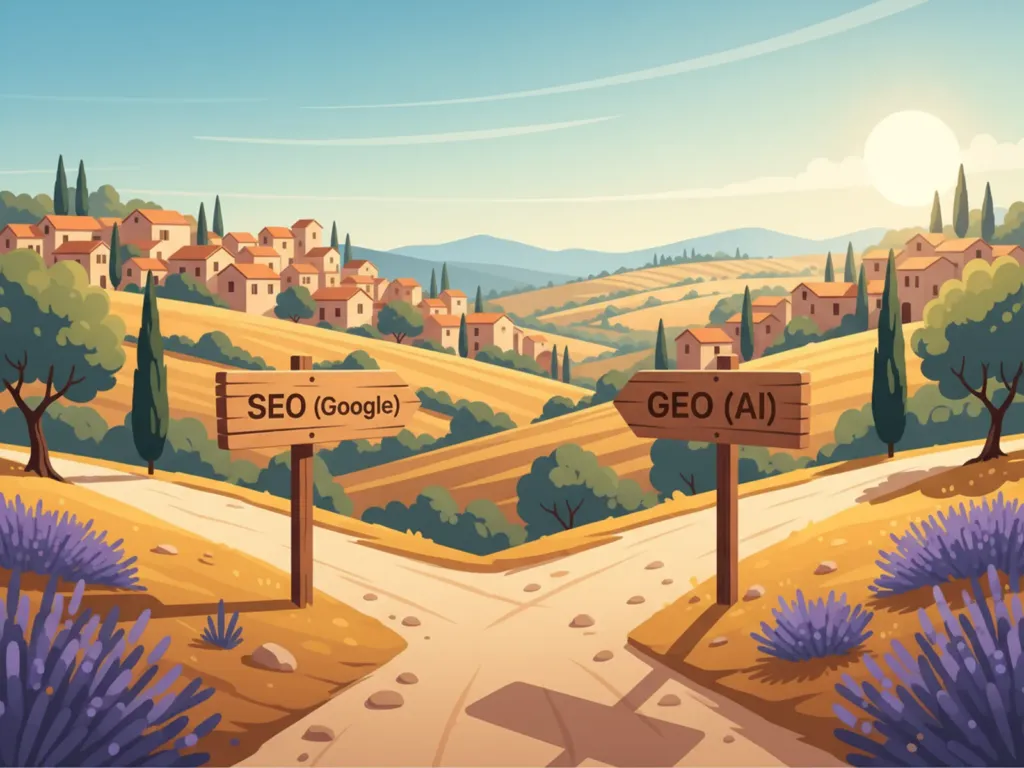
Direct comparison (without technicalities):
-
SEO: you optimize so that Google lists you when someone searches for keywords.
-
GEO: you optimize for AI to recommend you when someone asks complete questions (context, intent, nuances).
Practical keys:
-
SEO prioritizes pages and positions.
-
GEO prioritizes responses and recommendations.
-
In SEO you can be on page 2 and still get clicks.
-
In GEO, the AI suggests few options: either you show up… or you don’t.
Important fact: SEO and GEO complement each other. If you already have SEO, GEO is the next step to not fall behind.
How AIs decide which businesses to recommend
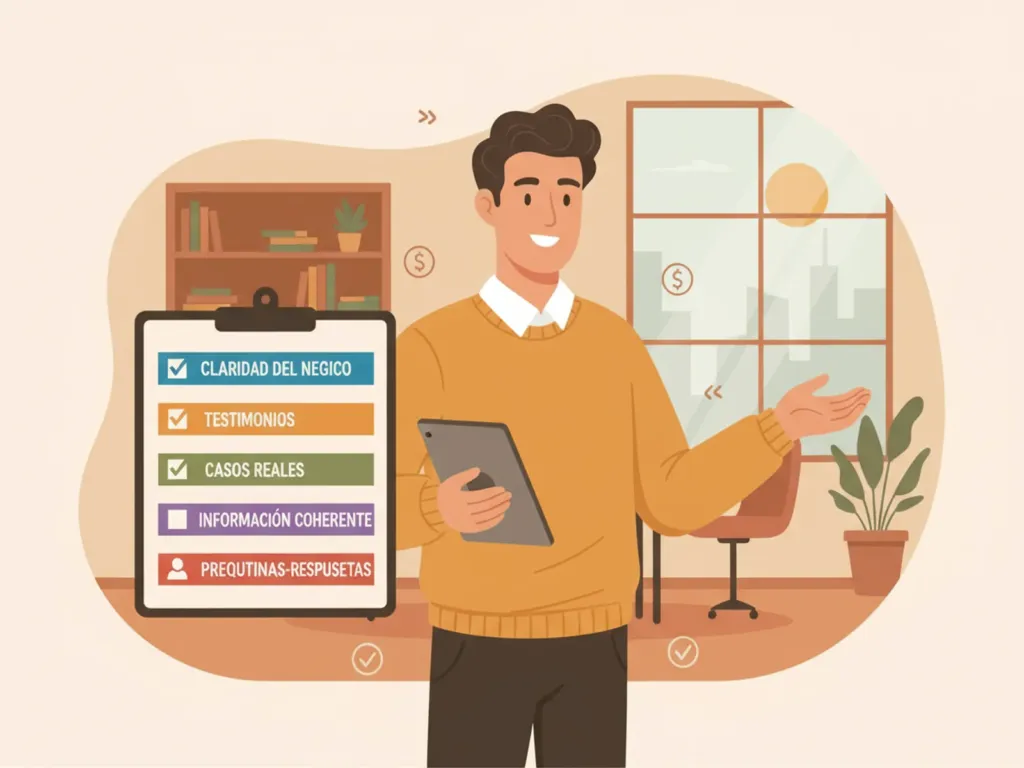
Think of AI as a recommending friend:
When someone asks “who do you recommend?”, that friend:
-
Understand what you do (clarity).
-
Trust you (real evidence).
-
Check that what you say is consistent (throughout your website).
What the AI values (simply explained):
-
Clarity: services, location, indicative prices, process.
-
Direct answers to common questions.
-
Reliability: verifiable testimonials, case studies, real presence.
-
Consistency: that the same thing you say in the home page is repeated without contradictions in services, contact, blog, etc.
-
Local context: cities, neighborhoods, service areas (Granada, Almeria, Murcia, Andalusia…).
-
Update: live content, not “abandoned web”.
⚠️ If this is missing:
The AI avoids recommending you because it can’t be sure you are the best choice. And it doesn’t put you at risk.
These signs are designed. It’s not just “writing pretty”: it’s structuring the information to be eligible.
Signs that your website needs to be optimized for AI

Quick checklist (check what applies to you):
Your home page does not tell you in 5 seconds what you do and where.
You have no FAQ with real questions from your customers.
Your services are written in generalities (“quality”, “excellence”) without concrete examples.
Do not show verifiable testimonials (name, business/city).
A case study that tells the before/after story is missing.
You do not explain your process (steps, timing, what it includes).
There are no clear local signs (neighborhoods, service areas, province).
Your blog does not answer practical questions (only internal or generic news).
Key information hidden in images/PDF without explanatory text.
Last update: “I don’t even remember”.
✓ If you checked 3 or more: it is time to apply GEO.
Optimizing for AI is not about installing a plugin. It’s rethinking content with method.
What is included in a website optimized for artificial intelligences?

Key parts (without jargon):
-
Clear proposal in the home page: what you do, for whom, and where.
-
Services explained with examples and results.
-
Service areas (Andalusia, provinces, neighborhoods) described in a natural way.
-
FAQ with real questions and short, quotable answers.
-
Case studies with photos and mini-stories (before/after).
-
Testimonials with name and city (better if there is a link to your business).
-
Work process (step by step: consultation, proposal, execution, delivery).
-
Useful blog (practical guides, comparisons, checklists).
-
Easy contact, schedules and response times.
-
Consistency throughout the web (what you say on one page matches the rest).
💡 Important fact: These sections make it easier for the AI to extract answers and recommend you on specific questions.
If you work in tourism/hospitality, you may be interested in:
How to choose a photographer for your hotel (Guide 2025).
Why you need an expert GEO web designer

Common mistakes when trying to “go it alone”:
-
Write nice texts… without answering real questions.
-
Filling the website with single keywords… without consistency.
-
Putting everything in images or PDFs… the AI can’t cite them well.
-
Create generic service pages (“leaders, excellence, quality”) without concrete evidence.
-
Forgetting the local signs (essential in Spain!).
What an experienced professional brings to the table:
-
Structure that the AI understands and can quote.
-
Clear messages that connect with your customer (not with robots).
-
Trust: well-integrated testimonials, cases and process.
-
GEO + SEO alignment to avoid losing traffic from Google.
-
Save time and focus on what is important: to be recommended.
Reminder:
GEO done right is a mix of strategy, content and design. It is not improvised.
How Luis Lemc can help you optimize your website for AI

Who I am:
I am Luis Lemc, a web designer with 10 years of experience in Spain. I help local businesses and international projects to create websites that convert visitors into followers and sales.
My approach to GEO (easily explained):
-
Clear diagnosis: I review your website as an AI would and tell you what is missing.
-
Content scripting: we define messages, FAQs and cases that answer real questions.
-
Page architecture: structure that the AI can understand and cite.
-
Signs of trust: testimonials, processes, service areas and examples.
-
GEO + SEO alignment: for Google and AI to find you.
-
Continuous improvement plan: what to update each month to stay on top.
Tangible benefits:
-
More visibility when your customers ask the AI.
-
Better qualified consultants (people who already understand what you offer).
-
Competitive advantage over businesses that have not made the leap.
How we start (simple):
-
Step 1: Write to me and tell me your goal.
-
Step 2: I prepare a diagnosis with prioritized actions.
-
Step 3: We implement together and measure results.
Ready for AI to recommend your business? Contact me at and let’s get started with your GEO diagnostic.
Next steps: start your GEO optimization today
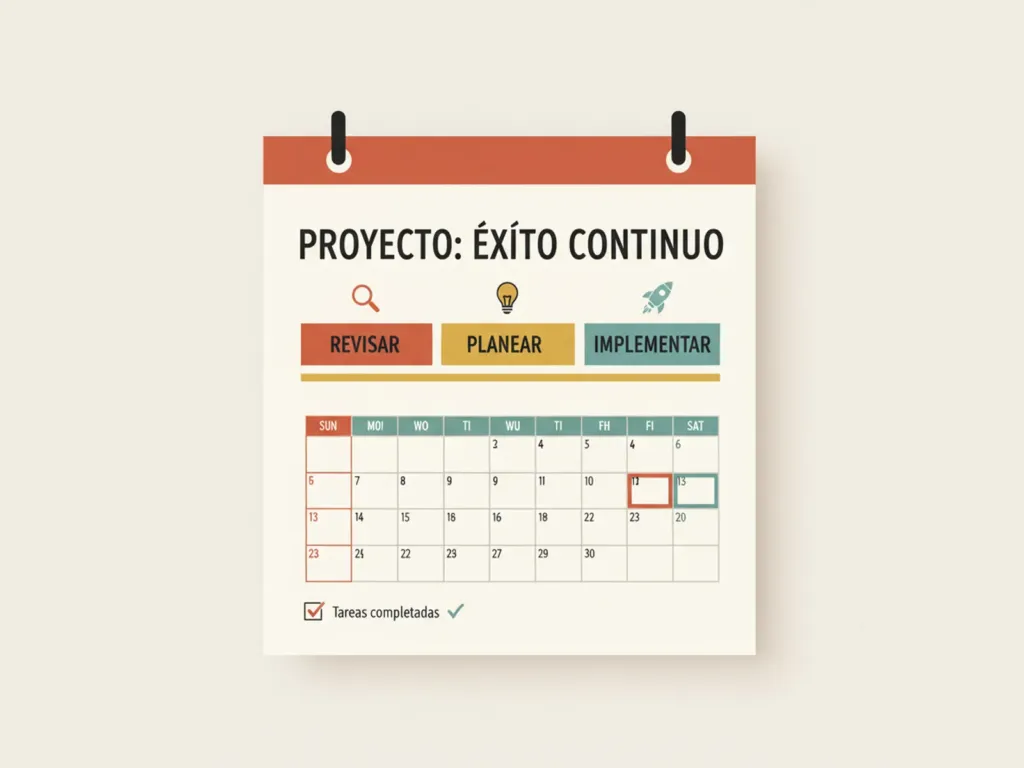
Step-by-step guide (very practical):
-
Check: Does your website answer real questions, and is it understood “what, where and for whom”?
-
Plan: Define 5-7 frequently asked questions and turn them into clear content.
-
Implement: Adjust home, services, FAQ, cases and contact so that the AI can recommend you.
✓ Startup checklist (copyable):
-
Home: clear sentence with service + city.
-
Services: examples and benefits (not just adjectives).
-
Service areas: mentions actual provinces/neighborhoods.
-
FAQ: 7-10 real questions with short answers.
-
Testimonials: name + city + result.
-
Case study: before/after in 6-8 lines.
-
Visible contact with estimated response time.
Want help completing this checklist? I’ll walk you through it step by step.
Frequently Asked Questions (FAQ)
- What exactly is GEO and how does it help me?
GEO is about preparing your website so that AIs understand what you do and trust to recommend you. It’s not just “positioning”; it’s answering real questions with clarity and demonstrating credibility (testimonials, cases, process). In practice, GEO brings you customers who ask the AI about businesses like yours in your area. - How is it different from SEO?
SEO looks for Google to show you in their listings. GEO is looking for AI to suggest you as an option when someone asks a complete question. They complement each other: if you already do SEO, you need GEO so you don’t lose visibility when people ask ChatGPT, Gemin or Perplexity. - How much does it cost to optimize my website for IA?
It depends on the starting point: some websites need content and structure adjustments and others a more thorough reorganization. After an initial review, I prepare a clear plan and budget. The idea is to start with what will give you the most impact. - How long does it take to see something?
Normally, the first effects are noticeable within weeks (better answers to specific questions). Consolidation comes in 1-3 months, depending on your industry and local competition. The important thing is to maintain consistency and update useful content. - Can I do it myself without a web designer?
You can move forward with the checklist in this guide, but the difference is usually in how you structure and connect the content so that the AI chooses you over others. That’s where my 10 years of experience saves you time and common mistakes. - Does it work if I serve several cities or provinces?
Yes, we define service areas with clear pages/segments (e.g. Granada, Almeria, Murcia), with examples and FAQs per area. This helps the AI a lot to match you with real local searches. - What happens if I do nothing?
Nothing dramatic today… but in months your competitors who do apply GEO will start showing up in AI responses, and you won’t. It’s a clear opportunity to get ahead of them.
Your business can be great, but if the AI doesn’t understand and doesn’t trust, it will not recommend you. GEO is not a trick: it is is to put order, clarity and real evidence on your website so that when your customers ask, you appear.
I am Luis Lemc, web designer with 10 years of experience in Spain. My job is to convert websites into clear machines of recommendation and trustthat Google finds you and that ChatGPT, Gemini and Perplexity recommend you..
Is your business ready to show up when your customers ask AI? Let’s talk today and let’s start your GEO diagnostic.
Search
Categories
- Behind the camera(1)
- Case studies(1)
- Digital Visibility(1)
- GEO(1)
- Photography for lodging(1)
- Tips for hosts(1)
- Visual marketing(1)
- Web Design(1)
Convierte más
visitas en reservas.
Suscríbete para recibir recursos, consejos y estrategias prácticas sobre cómo mejorar la imagen visual de tu alojamiento y aumentar tus reservas directas.
